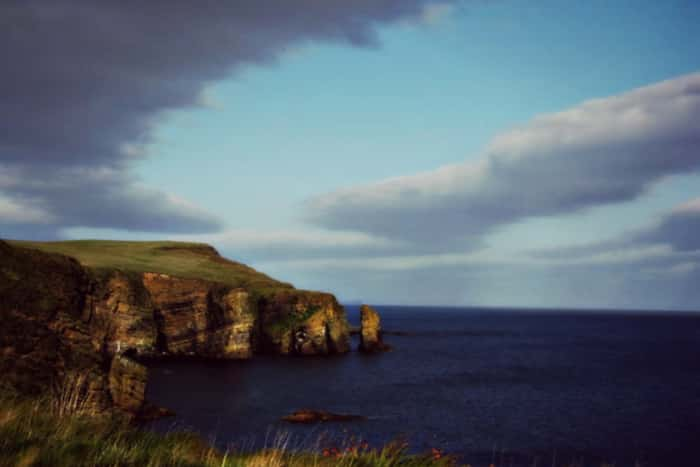Iron age economics
http://www.archaeologica.org/NewsPage.htm
Archaeologists have identified the site of a huge Iron Age feast on Orkney where more than 10,000 animals were cooked and eaten in a vast cliff top celebration.
Tests have shown that horses, cattle, red deer and otters were on the menu at the gathering above Windwick Bay, South Ronaldsay, more than 1,700 years ago.
Archaeologists from the University of the Highlands and Islands have been working at The Cairns for several years.
A large number of jewellery fragments and tools have already been discovered at the site, where the remains of an Iron Age broch and metalworking site can be found, with recent radiocarbon tests carried out at a midden - or rubbish tip - nearby.

Examination has identified the cooked bones of around 10,000 animals in the dump.
Martin Carruthers, an Iron Age expert at UHI and programme leader for MSc Archaeological Practice at the UHI Archaeology Institute, said: “These numbers tell you about the scale of the feast and the largesse of being able to have that amount of food in circulation for what appears to be a short lived event.
“The feast is doing two things. Its probably celebrating the successful conclusion of the making of a big batch of jewellery.
“The second point is the feast is pretty enormous and it is it probably the arena where pins and brooches are being handed out to individuals within the community.”
He said the event was likely to maintain and reinforce the structure of Iron Age society on the island at a time when Romans could be found further south on the mainland.
A large rectangular building with a huge central hearth, similar to the ‘Wag’ structures found in Caithness, can also be found at The Cairns.
This imposing building dates to around the time of the feasting event and perhaps represents the residence of a powerful household who organised the production and distribution of the valuable jewellery pieces.
Mr Carruthers added: “Whoever is causing this metal work to be produced is responsible for metal workers on the site or bringing in itinerant workers.
“The elites are driving their authority from the people and offering out these tokens in return.
“Thee items are probably of such high value that people could never have the capacity to pay back the debt. It holds you in your place.
“This whole event is about maintaining society.”
He also suggested that open air feasting could have been a method in which evolving Iron Age society expressed identity and solidarity.
The broch at The Cairns is known to have fallen out of use around the middle of the Second Century AD.
Later, two iron-working furnaces were set up at the site and more than 60 moulds used to cast fine bronze objects have been found at The Cairns over time.
These were used to cast a variety of objects ranging from simple bronze rings, to distinctive decorated dress pins and penannular brooches -the open-ring, cloak brooches that are sometimes referred to as Celtic brooches.
Trending
https://www.scotsman.com/lifestyle/site-of-huge-iron-age-feast-celebration-found-on-orkney-1-4706453
Hi! I am a robot. I just upvoted you! I found similar content that readers might be interested in:
https://www.scotsman.com/lifestyle/site-of-huge-iron-age-feast-celebration-found-on-orkney-1-4706453